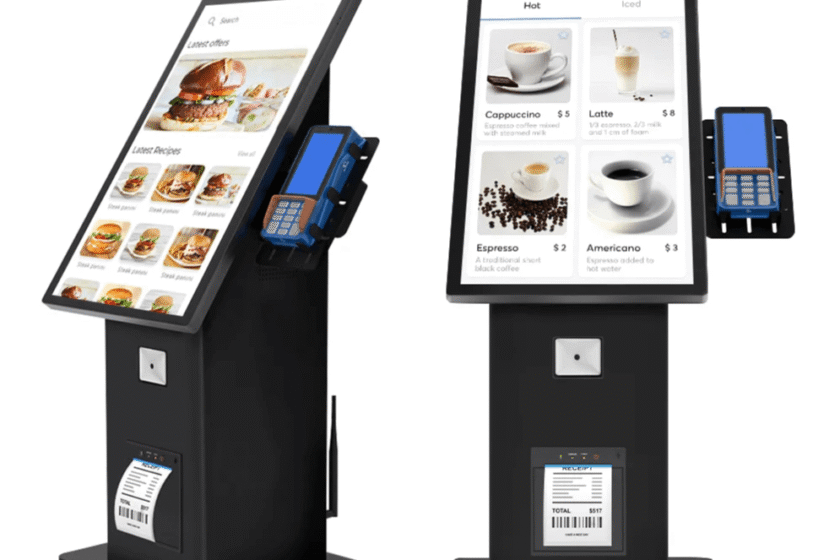How Self-Service Kiosks Revolutionize Digital Signage Experiences?
Self-service kiosks have fundamentally altered how businesses interact with their customers, moving far beyond simple transaction points to become sophisticated, interactive hubs that are reshaping the landscape of digital signage. For product users in the digital display space, understanding this integration is crucial. These robust, dedicated systems represent the next evolutionary step in customer engagement, offering unparalleled autonomy and instant gratification. By merging the power of dynamic, context-aware display with seamless user input, the self-service kiosk transcends traditional static and passive advertising, creating immersive, personalized, and efficient experiences that drive significant operational and revenue benefits.
The Essential Role of the Self-Service Kiosk in Modern Digital Signage

A self-service kiosk is much more than a screen—it is a complete user interface designed to perform specific tasks without requiring staff intervention. When viewed through the lens of digital signage, it becomes an active, two-way communication device. Traditional signage informs; the kiosk empowers. It takes the compelling visual impact of high-definition displays and adds a critical layer of interactivity, allowing users to move from mere viewing to immediate action. This capability is paramount for businesses aiming to streamline processes, from ordering food in a quick-service restaurant (QSR) to checking in at an airport or hospital. The value lies in its ability to manage high-volume customer flow efficiently, allowing human employees to focus on complex service issues rather than routine transactions.
The modern self-service kiosk is built on several key pillars: robust hardware, intuitive software, and reliable network connectivity. The hardware—often featuring durable, tempered touchscreens, secure payment modules, and integrated peripherals like scanners or printers—is designed for continuous public use. The software is the engine, offering a user-friendly interface that guides the customer through a process seamlessly, minimizing friction and frustration. For digital signage providers, these kiosks are not just another product line; they are a critical component of a comprehensive customer journey mapping strategy, ensuring the brand message is consistent, engaging, and actionable at the point of decision.
Key Features and Value Proposition for Digital Signage Product Users

For those implementing or developing digital signage solutions, the features inherent in a self-service kiosk provide a distinct advantage.
Unlocking Personalization and Dynamic Content
Unlike static displays, self-service kiosks capture contextual information—whether a customer’s loyalty ID, their current location, or their previous choices—allowing the display content to be instantly personalized. This dynamic capability is the essence of effective modern digital signage. A retail kiosk, for instance, can present related items and special offers based on a user’s selected product, dramatically increasing the average transaction value. This targeted content is far more valuable than a general advertisement, ensuring high relevance and a superior return on investment (ROI). Furthermore, the immediacy of interaction—the ability to touch, swipe, and choose—deepens customer engagement, transforming a passive marketing message into a tangible service.
Operational Efficiency and Data-Driven Insights
One of the most compelling arguments for integrating a self-service kiosk is the remarkable boost in operational efficiency. By automating routine transactions, businesses can drastically reduce customer wait times and reallocate staff to more complex or high-touch service roles. This automation translates directly into cost savings and improved customer satisfaction. Moreover, every interaction on the self-service kiosk generates invaluable data. This rich telemetry—which products were browsed, what items were frequently bundled, and at what times traffic peaked—provides profound insights that inform inventory management, staffing decisions, and future content strategies for all connected digital signage across the enterprise. This data-centric approach is central to maintaining a competitive edge in fast-moving consumer environments.
Reliability and Seamless Integration
Modern self-service kiosk systems are engineered for minimal downtime and maximum integration with existing business systems (e.g., Point of Sale, inventory management, Customer Relationship Management). The rugged design ensures longevity in high-traffic areas, while remote monitoring capabilities allow for proactive maintenance and rapid troubleshooting. For product users focused on digital signage networks, this reliability is paramount; a failed kiosk is not just a lost transaction, but a damaged brand experience. The true value comes from a solution that integrates seamlessly, acting as a single, coherent part of a larger digital ecosystem, where content deployment, updates, and data collection are unified across all displays.
The Digital Signage Ecosystem: Application Deep Dive

The versatility of the self-service kiosk allows it to thrive across multiple sectors, constantly elevating the standard for customer interaction within the digital signage framework.
Retail and Hospitality
In retail, the self-service kiosk acts as an endless aisle, allowing customers to browse items not physically stocked, place orders for home delivery, or check product details and customer reviews. This provides a superior shopping experience that bridges the gap between the physical and digital storefronts. In hospitality, they have become staples for effortless check-in and check-out at hotels, enabling guests to bypass reception queues. For quick-service restaurants, the self-service kiosk not only speeds up ordering but also demonstrably increases order sizes through intelligent, on-screen upselling prompts—a prime example of how interactive digital signage drives revenue directly.
Healthcare and Corporate Environments
In healthcare, self-service kiosks manage patient registration and appointment check-in, reducing administrative burden and ensuring patient data is captured accurately and securely. This allows healthcare professionals to focus on care rather than clerical tasks. In corporate settings, interactive kiosks serve as visitor management systems, internal directory and wayfinding tools, and training portals. They are a powerful demonstration of efficiency, integrating vital services into a sleek, professional digital signage format that reinforces a commitment to organizational modernity.
Future Outlook and Ethical Considerations
The future of the self-service kiosk is one of increasing sophistication, fueled by advancements in Artificial Intelligence (AI) and Machine Learning. Expect to see kiosks that offer even deeper personalization, recognizing returning customers and predicting their needs before they are explicitly requested. Voice command integration and more natural, gesture-based interactions will further simplify the user experience, blurring the lines between a human and automated assistant.
However, with this technological advancement comes a responsibility for ethical deployment—a core value in the development of meaningful technology. Businesses must prioritize user data privacy, ensuring that the rich data collected is handled with transparency and security. Furthermore, kiosks must be designed with universal accessibility in mind, ensuring people of all abilities can utilize them effectively. The power of the self-service kiosk lies not just in its efficiency but in its ability to serve all customers equitably, reinforcing a positive brand image and promoting a responsible use of technology in the public space. Ultimately, the successful integration of the self-service kiosk within a digital signage strategy is not about replacing human interaction, but about elevating the value of that interaction by automating the mundane and enriching the complex.
Frequently Asked Questions (FAQ)
Q: What is the primary difference between a self-service kiosk and standard digital signage?
A: Standard digital signage is primarily a passive, one-way communication tool, designed to display information, advertisements, or messages. A self-service kiosk, while utilizing a digital screen, is an active, two-way interactive system that allows the user to input information, make selections, complete transactions, and access personalized services without staff assistance. It transforms the display from a broadcaster into a facilitator.
Q: Are self-service kiosks only beneficial for large businesses?
A: Not at all. While large enterprises benefit from efficiency at scale, small and medium-sized businesses (SMBs) often see a proportionally greater benefit. An SMB can leverage a self-service kiosk to extend operating hours, handle peak traffic without hiring additional staff, and provide a professional, modern customer experience that competes with larger rivals. The ability to collect valuable data is advantageous regardless of business size.
Q: How can a self-service kiosk increase sales?
A: Self-service kiosks are highly effective at increasing average transaction values through intelligent upselling and cross-selling. Because the kiosk controls the ordering flow, it can use real-time data and programmed logic to present relevant, attractive add-ons (like suggesting a side dish or a premium upgrade) at the optimal moment. Customers, feeling less rushed than with a human attendant, are often more receptive to these digital prompts, leading to higher spending.




